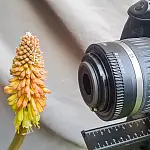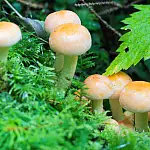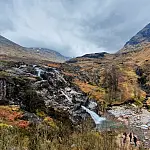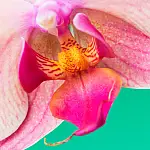10 Essential Tips for Improving Your Wildlife Photography10 essential wildlife photography tips that will help you get started, enhance your wildlife photography skills and get stunning results.
Wildlife photography is a challenging hobby to get into as it takes a lot of dedication. To excel in this field, you not only have to develop your camera-taking skills, but you even have to learn about the animals that you shoot. Photographing wildlife can be one of the greatest challenges for a photographer. The goal is to create a well-composed, striking image.
Wildlife photography requires bringing all your skills together. Camera techniques, exposures, depth of field, composition and a lot of research into the chosen animals behaviour.
Always Focus on the Eyes
The golden rule for portrait photography is to always set your focal point around the eyes. Look at any wildlife photo (or portrait) that grabs your attention and the focal point is on the eyes, pin-sharp and drawing you in.

For a moving subject, such as a bird in flight, it's most probably not possible to keep the focus point on the eye in addition to tracking the subject accurately. In these instances, focusing on the chest area works just as effectively. It's on the same focal plane as the eyes and is a larger area to track.
Get Down Low
Being on the same level as your subject not only enhances the three-dimensional appearance of the image, but it brings the viewer into the subject's world, making a much more intimate and engaging image.

When using wide apertures, you'll be able to get some superb out-of-focus foreground and background compression. This can add a great deal to your photograph making the subject 'pop' out of the picture.
Check Those Backgrounds
Obviously concentrating on the subject is the priority, however, you also have to pay attention to the background. There's nothing worse than taking a perfect shot, only for it to be ruined by an out-of-focus branch bisecting the subject.
_featured.webp)
These can, of course, be airbrushed out, however, this is a lot easier to notice these in the field and slightly alter your position, leaving you much less work within the virtual darkroom.
Give the Subject Space
The Rule of Thirds is rather religiously applied in landscape photography, nevertheless, it also turns out to be useful for photographing wildlife.

Dividing the frame vertically and horizontally into thirds and placing important details of the scene where those lines intersect, such as the eyes of the subject itself, can greatly spice up a picture. By doing this, you assist the composition of the entire scene and create an area that the subject may move into which should create a better shot.
Use a Sturdy Tripod
If you're enthusiastic about taking pictures outside, then a good-quality tripod is very important. This will allow you to shoot from a stable platform, minimising camera shake - especially in low light conditions - and achieve sharp focus.
Situational Awareness

Don't get into the habit of always looking into the viewfinder or the display. The viewfinder only shows you so much of what is happening. Observe your environment with your bare eyes, so you'll see everything better. Maybe there are other animals, or predators moving in on your subject. Maybe you've drawn the attention of a friendly animal, or something much less friendly. Maybe the tide comes in quickly, or there are trip hazards.
Only glance into the viewfinder only when you find yourself in a position to shoot.
Protect Yourself and Your Gear from the Elements
Before you go out, make sure that you have all the essential equipment to keep you and your equipment protected from the elements.
This includes warm and waterproof clothing, hats and gloves in the wintry weather, and sun protection in the summertime. If you're walking or trekking to the subjects, then a good pair of boots is a must for walking over rough terrain.
To keep your equipment protected, purchase a sturdy, waterproof camera backpack.
Above all, choose clothing and gear that doesn't have bright colours as this can be distracting to wildlife when you're out taking pictures.
Patient Isn't A Virtue... It's a Necessity
Waiting for animals can take a very long time, so you will have to additionally search for a place where you'll be able to lie down safely and comfortably for hours.
Don't Forget Wide Angles
Too many wildlife photographers get obsessive about large focal lengths to get as close as possible to the animals, isolating them completely from their environment. The result is frequently a picture that appears as if it may well be taken of a captive subject in a managed location with no context and no surrounding surroundings.

Challenge yourself to shoot at a much wider angle to provide the viewer with a better idea of where you took the picture and where your subject must carve out a living in the wild.
Know Your Subject Behaviour and Habits
Since much of wildlife photography is based upon capturing fleeting moments, it will pay to be able to somewhat predict your subject's behaviour.
By researching and observing your subject you'll be able to learn how to anticipate actions and movement. Is a bird about to take flight? Is it about to fall asleep? Knowing what the animal is more likely to do next can help you get in a position to capture the very best shot.
Shoot During the Golden Hours For Amazing Lighting
Light is the most important factor in all forms of photography however it's especially important for wildlife photography. During the golden hours, around dawn and dusk, the sun is at its warmest hue, casting rich colours around the landscape and frequently providing a dramatic backdrop for your subject.

The golden hours are frequently the times when animals are most active - before it gets hot and after it gets hot. Capturing animals in their most candid moments is, without a doubt, one of the goals of wildlife photography, and these candid moments almost always exist all through the very early and late hours of the day.
If the lighting isn't good or if your subject has both dark and light contrasting colours on their body, a low-powered external flash can give you that extra light you need to fill in those spots or simply provide that perfect gleam in your subject's eyes.










